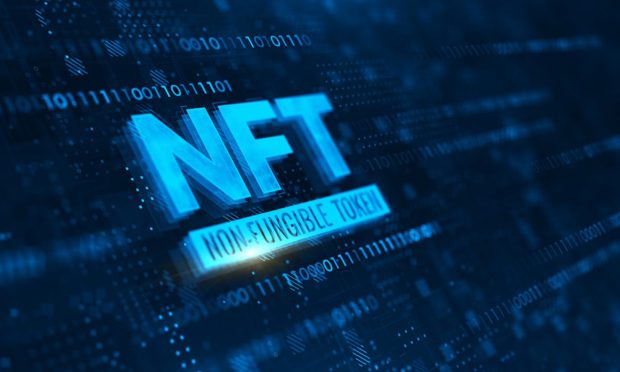PYMNTS NFT Series: Can NFTs Be Securities? The SEC Says Yes

Welcome to the eighth installment of PYMNTS’ series on non-fungible tokens (NFTs), the newest craze in crypto.
In it, we’ll be looking at every part of the NFT craze sweeping the worlds of art, video games, social media, fashion and sports.
When it’s finished, you’ll have a solid grasp of the basics of NFTs — what they are, how they work, what they are going to be used for, what their drawbacks are, what you need to be aware — and wary — of, and why people are paying so much money for them.
Also see: PYMNTS NFT Series: What Are NFTs and Why Are They Crypto’s Newest ‘Next Big Thing?’
PYMNTS NFT Series: From Famous Artists to Forgers, the Art World Embraces NFTs
PYMNTS NFT Series: Gaming NFTs Don’t Just Have Value, They Have An Economy
PYMNTS NFT Series: NFTs Target Collectors Market With Avatars, Celebrities
PYMNTS NFT Series: In the Metaverse, NFTs Can Buy Experiences, Luxury and Eyeballs
PYMNTS NFT Series: NFTs Used by Artists to Create Musical ‘Middle Class’
PYMNTS NFT Series: Tokenizing Assets Is NFTs’ Next Frontier
On the face of it, the idea that NFTs could be securities seems farfetched. Each one is, by definition, unique. That’s what the non-fungible part of non-fungible token means: Each one is unlike any other.
Of course, there’s an obvious exception to this — tokenizing securities like shares of stock. But an NTF token holding a piece of art or a song? No.
A commodity, yes — a CryptoPunk certainly falls under the very broad legal definition of a commodity as covering “all goods and articles” — but an artwork avatar is not a share of stock.
So why did Hester Peirce, crypto’s favorite Securities and Exchange Commission (SEC) member, spend 2021 warning NFT makers to beware of crossing her agency?
In word, fractionalization. One of the favorite examples of the business uses of NFTs is in real estate: Take a property, divide ownership of the property into 100 or 1,000 parts and mint each one onto an NFT. This way a hotel, strip mall, eight-figure Manhattan condo, even an orange orchard could be sold to smaller investors who normally don’t have access to investments of that kind.
“People are being very creative in the types of NFTs they’re putting out there,” Peirce warned at Draper Goren Holm’s Security Token Summit in March. “You better be careful that you’re not creating something that’s an investment product, that’s a security.”
Peirce, whose early support of crypto at the commission earned her the moniker “Crypto Mom” (former Commodity Futures Trading Commission chairman and current digital dollar advocate Chris Giancarlo is “Crypto Dad”) added, “The definition of security can be pretty broad.”
The same might apply, Peirce has warned, to a NFT or a basket of NFTs that is itself fractionalized and sold to investors.
It’s not too hard to imagine the buyer of Mike “Beeple” Winkelmann’s $69 million “Everydays: The First 5,000 Days” collage fractionalizing its ownership into 5,000 separate NFTs. Buyers would have to rely on the owner (or some manager) custodying and likely displaying it to protect the work and increase its value.
“I think that’s an area where people do need to be careful,” Peirce reiterated on Coindesk TV’s First Mover in late December. “I think we’ll see during 2022 an increasing fractionalization of NFTs because these are valuable assets.”
The Howey Test
The definition of a security come from the Supreme Court via a 1946 court case, SEC v. W.J. Howey Co, which laid out a four-part test for determining if an investment is a security: It is an “investment of money (1) in a common enterprise (2) with a reasonable expectation of profits (3) to be derived from the efforts of others (4).”
So, despite the howls of crypto entrepreneurs who claim those tokens are commodities because they are “utility tokens” that will be used make transactions on that blockchain, it’s pretty easy to see why the SEC considers an initial coin offering, or ICO, of tokens to fund the creation of blockchain project a security under what’s become known as the Howey Test.
One, people are investing money by buying tokens. Two, those tokens will work on the blockchain project, which is a common enterprise. Three, they are buying those cryptocurrency tokens because they believe the project will succeed and the tokens will increase in value, allowing them to be sold at a profit. And four, this will only happen if the project’s founders continue their efforts to build and then run the project.
So how does this work back to NFTs? Well, you’re 1) selling a share of a property that will 2) be owned by a group of investors who 3) expect to make a profit from either the revenues or sale of that property, which can only happen if the sellers, or some other management entity 4) maintain and run it. Even the condo in the example or a single-family home needs to be rented and maintained.
And if you are familiar with securities law, you caught the joker in that deck of real estate examples: W.J. Howey Co was selling shares in Florida orange orchards.
